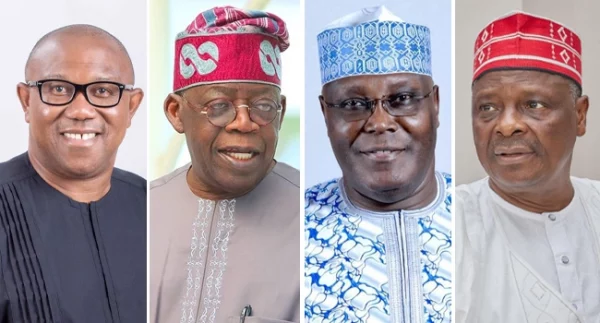A final nationwide opinion poll was conducted by NOI Polls Limited on behalf of Anap Foundation in the first half of February 2023, in preparation for the upcoming 2023 Nigerian Presidential elections. This is the third poll in the series, with two earlier polls carried out in September and December 2022 using the same methodology. The first national poll for the 2023 Presidential elections was released by Anap Foundation on September 15, 2022, followed by a Bloomberg poll on September 28, 2022.
Read more about Politics
It’s worth noting that the methodology used by NOI Polls for this poll is nearly identical to the methodology used in previous Presidential Polls they conducted for Anap Foundation in 2011, 2015, and 2019. In all past Presidential Polls, the frontrunner identified by the polls went on to win the election, despite a significant number of voters who were undecided or refused to indicate their preferred candidate.
Anap Foundation has also used the same methodology for their Governorship Polls conducted in 2011, 2014, 2015, 2019, and 2022, which has held up well. However, there are some significant differences in the 2023 Presidential race compared to previous years, including a long campaign season, the presence of four major candidates instead of two, and greater voter enthusiasm.
In December 2022, Anap Foundation expanded its methodology in its second Presidential Poll by conducting three different polls with sample sizes of 1,000, 2,000, and 3,000. They found that the results did not change significantly with the different sample sizes. However, for their third and final poll in February 2023, they chose a sample size of 2,000 instead of the 1,000 used for the previous two polls.
The results of the third and final poll show that Peter Obi of the Labour Party is still in the lead, with Asiwaju Bola Ahmed Tinubu of the All Progressives Congress and Alhaji Atiku Abubakar of the People’s Democratic Party trailing behind him. Dr Rabiu Kwankwaso of the New Nigeria Peoples Party emerged as the only outsider. Peter Obi had the support of 21% of registered voters, followed by Asiwaju Bola Ahmed Tinubu with 13%, Alhaji Atiku Abubakar with 10%, and Dr Rabiu Kwankwaso with only 3% of voters proposing to vote for him.
Sign up for the Connect Nigeria daily newsletter
At this point in time, Mr Peter Obi has an 8% lead over his competitors, but it’s not enough to set him apart from the leading candidates who have scored 13%, 10%, and 3%. This is because a large number of voters are still undecided or have chosen not to reveal their preferred candidate, with 23% being undecided and 30% refusing to disclose their choice. The data also shows that there is a gender difference among the undecided voters, with 27% of female registered voters being undecided compared to 18% of male registered voters.
In terms of voter registration, the North East has the highest percentage of registered voters with 96%, followed by the North West and South East with 93% each. The North Central, South West, and South-South have slightly lower percentages with 92%, 89%, and 88%, respectively. As a result, voter participation across the six geopolitical zones now falls within a narrow range of 88-96%, which is significantly different from 2015 when maximum voter participation was highest in the North West at 80% and lowest in the South-South at only 60%.
The percentage of undecided and refused voters has risen significantly from 38% in 2019 to 53%, indicating that a large number of voters are still undecided or unwilling to disclose their preferences just two weeks before the general elections. The methodology used does not allow for NOI Polls staff to influence unresponsive voters to make a choice as it would violate their right to vote.
When asked if religion or ethnicity would influence their choice of candidates, 9% of respondents stated that religion would have an impact, while 87% stated that it would not, 7% responded that ethnicity would have an impact while 89% stated that it would not. The top five reasons for voters to vote in the upcoming elections were to address insecurity, inflation, unemployment, poverty alleviation, and education.
A significant percentage of voters aged 36-45 and 46-60 expressed a willingness to vote, with 85% and 89% respectively. The percentage of registered voters who stated they would definitely vote in the 2023 Presidential election increased from 8 in 10 in 2019 to almost 9 in 10, the highest recorded since NOI Polls began gathering data. If voters remain committed, there could be a substantial turnout in the upcoming elections.
Register to attend the CN Business Mixer
The outcome of the elections is still uncertain, as a high percentage of undecided and refused voters could ultimately determine the winner. The South West Zone had the highest percentage of voters who refused to disclose their preferred candidate at 38%, which is concerning. NOI Polls’ conclusion is that, despite Mr Peter Obi being the front-runner, the race is too close to call, and the high percentage of undecided and refused voters cannot be ignored. The long campaign period has been unexpectedly stagnant.


